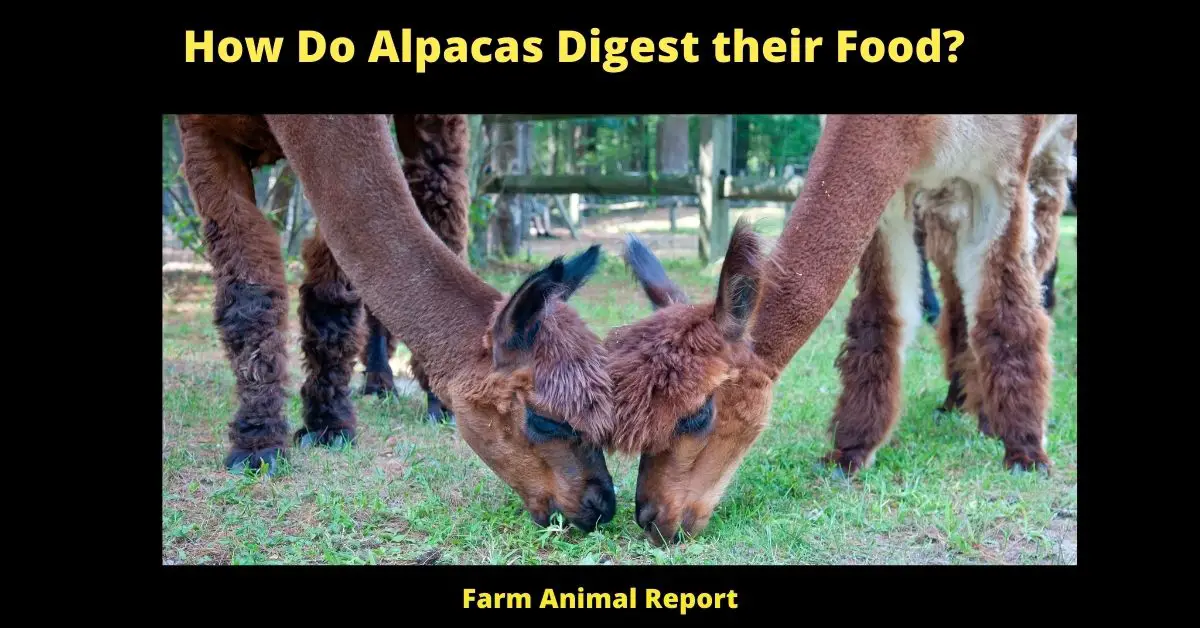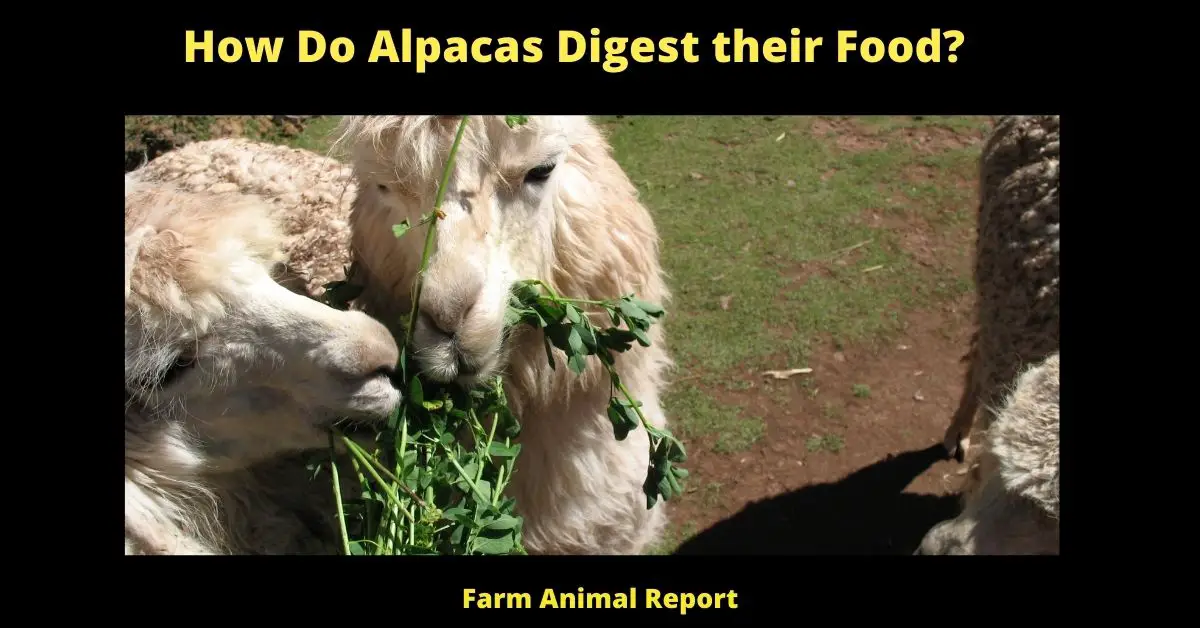Alpacas have three stomachs the rumen, the reticulum, then the omasum. They have a very efficient digestive system and can digest their food in several hours. They chew the cud like ruminants and have teeth that aid in the tearing and grinding of grasses.
How Do Alpacas Digest their Food?
There are many ways to answer this question. One way is that alpacas have a three-chamber stomach, which means they digest their food in different parts of the digestive tract. The first chamber is called the rumen and it’s where food ferments before moving into the second chamber, called the reticulum. Food then moves on to the third chamber, called omasum. Finally, after all these steps have been completed, the food finally leaves through one of two exits: either via an opening at the rear end or a passage from a side door near their mouth
Check Out Amazon’s Educational Resources for Raising Alpacas
Jump to 18 ways Alpaca Farmers make Money
Are Alpacas Ruminants?
Alpacas are not classified as ruminant animals. Ruminants have four stomachs, which is why they can digest food a little more slowly than alpacas. Alpacas have three stomachs and process their food much faster.
Digestion Process in the Alpacas Stomach
The first part of digestion happens when the food enters the stomach. The alpaca’s saliva starts to break down the carbohydrates in the food. There are also certain enzymes in the saliva that help to start breaking down proteins and fats.
Once the food is broken down, it will move into the second part of the stomach. This is where all of the digestion really takes place. In this part of the stomach, there are a lot more enzymes that break down the food even further and help it to move on into the small intestine where nutrients will be absorbed.
Most of what is leftover in an alpacas stomach get sent back up towards their mouth through a special valve called a reticulum.
This is where the name for alpacas being ruminants comes from. It literally means ‘to chew over again’. Alpacas will chew their food a second time in order to extract any more nutrients that they can before swallowing it again.
The last part of digestion happens in the small intestine. This is where all of the nutrients are absorbed into the body. The small intestine is where all of the nutrients from food will get turned into glucose, which makes it easier for alpacas to store this energy in their bodies and use it when they need it.
This process takes place over several hours, so alpacas can eat many times throughout the day without worrying about getting sick.
They have a three-stomach system that helps them to digest their food much faster than other animals in the same family. This allows them to eat many times throughout the day without worrying about getting sick.

How do Alpacas Chew?
When an alpaca chews its food, it is actually chewing backward. This is because their mouths start at the back of their head and work their way towards the front, instead of starting in the front where you would expect them to chew.
All alpacas have teeth up until they are about 24 months old when they will lose these baby teeth and grow adult ones in their place.
Adult alpacas have 32 teeth in total – 16 on the top and 16 on the bottom. Alpacas use these teeth to cut their food into small pieces so that it is easier for them to digest.
Their incisors (the front four teeth) are very sharp and are used for cutting, while the molars (the back teeth) are used to chew the food.
Their tongues have ridges on them that help to grind up their food even more, so they can digest it with ease. This also helps them when they swallow by pushing the food down into their stomachs instead of getting stuck in between their teeth.
It is interesting to note that alpacas have two different types of saliva. The first type is called mucous saliva and it helps to lubricate the food so that it can move more easily through the digestive system. The second type of saliva is called digestive saliva and this contains all of the enzymes needed to start breaking down the food.
The first part of digestion happens when the food enters the stomach. The alpaca’s saliva starts to break down the carbohydrates in the food. There are also certain enzymes in the saliva that help to start breaking down proteins and fats.
Once the food is broken down, it will move into the second part of the stomach. This is where all of the digestion really takes place. In this part of the stomach, there are a lot more enzymes that break down the food even further and help it to move on into the small intestine where nutrients will be absorbed. Most of what is leftover in an alpacas stomach get sent back up towards their mouth through a special valve called a reticulum. This is where the name for alpacas being ruminants comes from. It literally means ‘to chew over again’. Alpacas will chew their food a second time in order to extract any more nutrients that they can before swallowing it again.
The last part of digestion happens in the small intestine. This is where all of the nutrients are absorbed into the body. The small intestine is where all of the nutrients from food will get turned into glucose, which makes it easier for alpacas to store this energy in their bodies and use it when they need it.
This process takes place over several hours, so alpacas can eat many times throughout the day without worrying about getting sick.
Final Thoughts – How Do Alpacas Digest their Food?
In summary, alpacas have a three-stomach system that helps them to digest their food much faster than other animals in the same family. This allows them to eat many times throughout the day without worrying about getting sick


